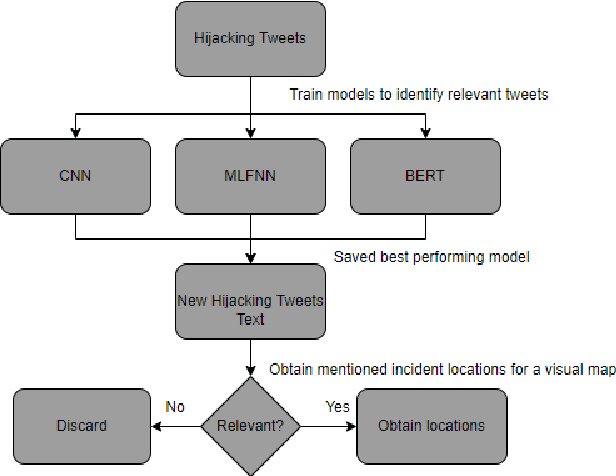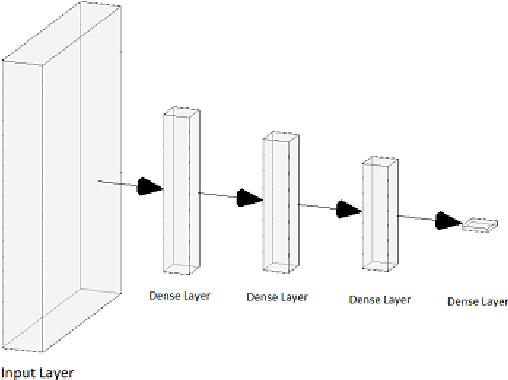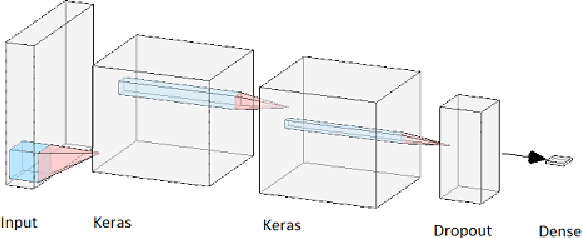A Twitter-Driven Deep Learning Mechanism for the Determination of Vehicle Hijacking Spots in Cities
Paper and Code
Aug 11, 2022



Vehicle hijacking is one of the leading crimes in many cities. For instance, in South Africa, drivers must constantly remain vigilant on the road in order to ensure that they do not become hijacking victims. This work is aimed at developing a map depicting hijacking spots in a city by using Twitter data. Tweets, which include the keyword "hijacking", are obtained in a designated city of Cape Town, in this work. In order to extract relevant tweets, these tweets are analyzed by using the following machine learning techniques: 1) a Multi-layer Feed-forward Neural Network (MLFNN); 2) Convolutional Neural Network; and Bidirectional Encoder Representations from Transformers (BERT). Through training and testing, CNN achieved an accuracy of 99.66%, while MLFNN and BERT achieve accuracies of 98.99% and 73.99% respectively. In terms of Recall, Precision and F1-score, CNN also achieved the best results. Therefore, CNN was used for the identification of relevant tweets. The relevant reports that it generates are visually presented on a points map of the City of Cape Town. This work used a small dataset of 426 tweets. In future, the use of evolutionary computation will be explored for purposes of optimizing the deep learning models. A mobile application is under development to make this information usable by the general public.
 Add to Chrome
Add to Chrome Add to Firefox
Add to Firefox Add to Edge
Add to Edge